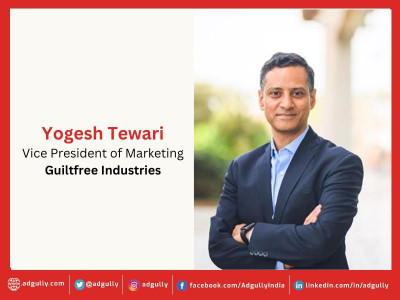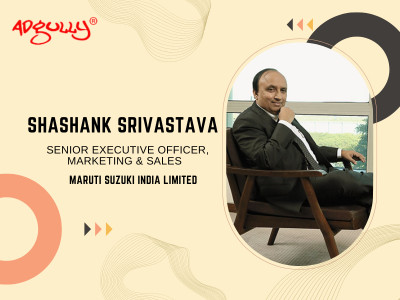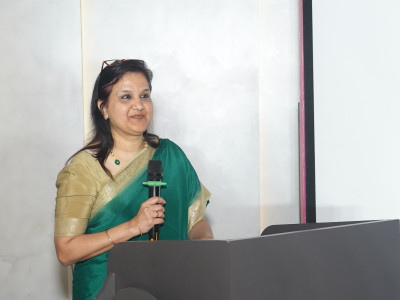Deloitte’s Karishma Gupta & Barsha Chakraborty decode significant shifts in ad industry
In a constantly evolving advertising landscape, it is essential for brands and marketers to stay attuned to emerging trends and challenges. Karishma Gupta, Partner, Deloitte India, and Barsha Chakraborty, Manager, Deloitte India, provide insights into significant shifts in the advertising industry and the impact of trends such as mobile gaming, artificial intelligence (AI), and influencer marketing. They also explore the delicate balance between promotional content and authenticity. Furthermore, they discuss the challenges and opportunities at the intersection of strategy, creativity, and technology, and what lies ahead for brands and marketers in this dynamic environment.
Could you provide an overview of the significant changes and trends you’ve witnessed in the advertising industry?
Significant shifts:
- Accessibility: Earlier, small-scale, home-based entrepreneurs couldn’t think of reaching even hundreds of people, but today we see multiple such businesses and brands empowered to reach and build awareness by advertising via social media and through Whatsapp even.
- Always-on: Ads are no longer infrequent messages peppered through the TV shows, sports or movies that we watch, but now there’s a continuous stream of content and ‘tailored-for-me’ messaging that’s always targeted towards us across multiple touchpoints, to enhance our overall brand experience.
- Beating the Skip ad function: Some brands are inching toward ultra-short, but incredibly engaging, snackable ads to beat the dreaded “skip” button on YouTube. Native ad content without volume and with captions are all the rage, in an attempt to not interfere with people as they’re browsing.
Mobile gaming has gained immense popularity in recent years. How do you see advertisers leveraging this trend to connect with their target audiences, and what challenges does it pose?
Brands are actively shopping inventory within gaming apps, with the primary goal of boosting brand awareness. To harness the extensive reach and engagement potential of these platforms, advertisers are increasing their investments in mobile advertising. Recent industry reports indicate that over the past two years, six out of every ten advertisers have adopted mobile gaming advertising, resulting in a twofold surge in advertising expenditures compared to pre-pandemic levels.
Advertisers are opting for in-game advertising, in the form of banner ads, video ads, or even product placements within the game environment. Watching in-game ads endows players with rewards like special power-ups or in-game currencies. Gaming influencer-brand collaborations are proven means to engage with their communities to showcase a game or product to their audience, providing authentic and relatable endorsements.
The key challenges are:
- Ad fatigue: Mobile gamers may become annoyed by excessive ads, leading to ad fatigue which may result in them opting for ad-block software. Balancing the frequency and intrusiveness of ads is crucial to maintaining a positive user experience.
- Targeting and privacy concerns: Advertisers need to be cautious about how they collect and use data for targeted advertising. Privacy regulations and concerns may limit their ability to personalise ads effectively.
- ROI: Measuring the effectiveness and return on investment (ROI) of mobile gaming advertising can be complex. Advertisers need robust analytics and tracking mechanisms to assess the impact of their campaigns accurately.
Artificial Intelligence is playing a growing role in advertising. Could you elaborate on how AI is transforming the advertising landscape and its impact on brands’ strategies?
Right from personalisation and targeting to predictive analytics, AI has truly come a long way in elevating the ambit of what advertisers can do to enhance brand presence and mental availability.
AI provides advertisers with the opportunity to evaluate multiple ads in minutes and compare their performance against desired KPIs. With this level of instant, data-informed ad optimisation, ads’ performance is greatly enhanced.
Tools such as Dall-E and Midjourney have been instrumental in generating high quality digital images from natural language descriptions, enabling content creation partners to ideate quickly and scale.
As brands go global and diversity in marketing and ad imagery assumes paramount significance, AI tools can equip them with a vast library of stock photos representing people from multiple ethnicities, putting the control in the regional/ local brand teams’ hands to fine-tune the output to closely match the target demographics.
How can brands strike a balance between promotional content and authenticity to engage with consumers effectively?
According to a report from SproutSocial, 2/3rds of consumers equate feeling connected with trust. Millennials and GenZ actively seek brands that are in sync with their beliefs, but are smart enough to disengage when they sense inconsistency. In this context, the biggest paradox of our times is the influencer marketing and authenticity paradox – If someone is being paid to share a product, how authentic can their viewpoint really be?
Collaborating with influencers can establish newer, valuable avenues for reaching a broader audience, but it also demands a vigilant approach to maintain authenticity. Brands must exercise careful selection when partnering with influencers to ensure that promotions remain sincere and resonate with the audience. When influencers genuinely align with a brand’s values and messaging, this authenticity shines through in the eyes of the audience, fostering a deeper connection rooted in trust. Consequently, to cultivate enduring relationships with customers, influencer partnerships must achieve equilibrium between authenticity and business goals.
What are the key challenges and opportunities that brands face when navigating the intersection of strategy, creativity, and technology in their advertising efforts?
As brands navigate the tricky terrain of privacy laws in a cultural landscape where brand trust seems to be gradually eroding, the biggest challenge is maintaining brand integrity while staying authentic and relevant to the customer.
Balancing tech and creativity (rather, human ingenuity) is an emerging challenge. Most organisations perceive tech to be the end all, be all to solving their business challenges, whereas the sweet spot is by acknowledging that it is really about our unique ability to understand, interpret and utilise the tech efficiently.
Navigating the content overload: We are bombarded by all forms of content 24x7 – it is essential to identify workarounds and innovative ways to remain distinctive and strike a chord among customers. With every person on social media identifying as a content creator, there are additional pressures of ensuring higher quality, clutter breaking and truly engaging content to ensure engagement.
Tradeoff between hyper personalised content and user privacy: While personalised experiences enhance engagement, excessive data collection can infringe on privacy. Brands must remain transparent, offering opt-out options and manage user consent to not erode brand trust.
As the advertising industry continues to evolve rapidly, what do you see as the most exciting opportunities and potential disruptions on the horizon for brands and marketers?
The opportunities:
- Excited to see the sheer width of possibilities in terms of captivating and personalised branded experiences – IRL, in the virtual world and otherwise, leveraging AR/VR tech.
- With the growing use of voice-activated devices and conversational commerce, it will be interesting to see the innovations made by brands in these channels to enhance customer engagement and conversations.
- Micro and nano influencers are the next frontier for influencer marketing, bound to gain more prominence, offering highly targeted and authentic connections with niche audiences.
Potential disruptions:
- Ad blocking and avoidance: The rise of ad blockers and consumer ad avoidance behaviours may challenge traditional digital advertising models, forcing brands to seek alternative strategies.
- Data Monetisation Challenges: Brands may face challenges in monetising data due to privacy concerns, requiring innovative approaches to data usage.
To thrive in this evolving landscape, brands and marketers must remain agile, keep a pulse on emerging technologies and consumer trends, and adapt their strategies accordingly. Building trust, delivering authentic experiences, and respecting privacy will be critical to success in this dynamic environment.


















Share
Facebook
YouTube
Tweet
Twitter
LinkedIn